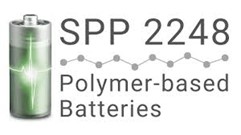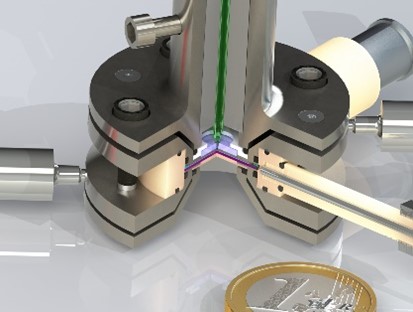Institute Electrochemical Energy Storage
PolyLiS

Multi spectroscopy analysis of polymer-based Lithium sulfur batteries
Lithium Sulfur batteries (LSB) are one of the promising candidates for post-Li-ion energy storage due to their high theoretical capacity and the abundance of the cathode’s raw materials. Nevertheless, they are currently limited in cycle stability, mainly caused by the polysulfide shuttle effect resulting in the precipitation of inactive Lithium sulfide at the anode.
Within the DGF funded special research program “Polymer based batteries” (SPP 2248), the project aims to synthesize novel conductive, polymer-based cathodes, which should prevent sulfur migration to the anode. The synthesized cathodes will be investigated with multi-spectroscopic operando measurements while the batteries perform under real conditions. These experimental results will be correlated to theoretical calculations. The group of Prof. Yan Lu (HZB, Uni Jena) will synthesize cathode material, while the group of Dr. Sebastian Risse (HZB) will perform operando measurements. Prof. Joachim Dzubiella and his group (Uni Freiburg) will corelate the experimental results to theoretical predictions based on DFT and MD simulations.
For that purpose, we designed a new measurement setup based on the CR2032 coin cell. The cell housing is designed to enable UVVis spectroscopy in the vicinity of the separator tracking diluted polysulfides in the electrolyte. The current collector of the cathode is perforated enabling Raman spectroscopy directly through the cathode. Here, dissolved active species as well as solid active species at the cathode can be investigated. The special design of the current collector ensures homogenous performance over the entire cathode area, while the perforation allows probing the electrolyte. Additionally, the setup allows electrochemical impedance spectroscopy operando measurements. This reveal changes in interfacial properties and allows drawing conclusions on the underlaying mechanisms.

